“Nano” Camper Takes Tiny House Movement Back to Its Roots
About a decade ago, when the tiny house movement was first popularized on the internet by Jay Shafer and the Tumbleweed Tiny House Company, most of these micro homes on wheels measured between 12 and 20 feet long. Since then, they’ve seemed to balloon in size, stretching the definition of “tiny” further and further over the years. Today, many builders use slide-outs, 32-foot-long trailers, and other tricks to expand the available space to the maximum road-legal limits — which, some argue, starts to defeat the purpose.
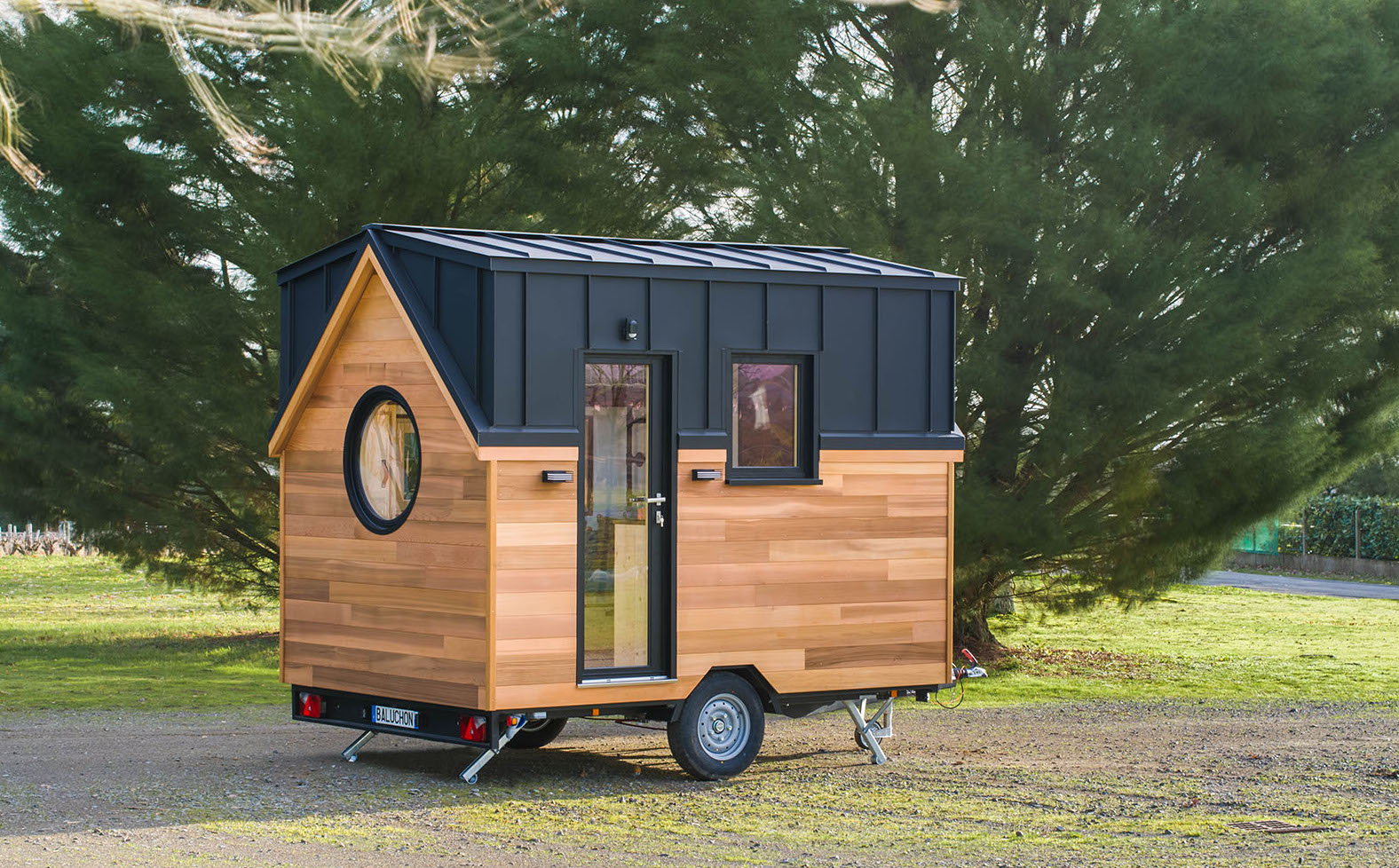
The “Nano” house design by French studio Baluchon reigns in the excess with an extra tiny tiny house that’s still remarkably functional. Scaled down to a size that’s closer to a converted van than the standard tiny houses seen on the market today, it retains the architectural interest that leads many people to choose tiny homes over campers in the first place.
It’s sort of like someone took a circa-2010 tiny house and compacted it down to a petite package that could be towed behind many standard vehicles. You still have the gabled detail in the front, the wood cladding, and real windows that make it feel more like a conventional residence than an RV, but the thing is still just 3.3 meters (10.8 feet) long while retaining the standard width of 2.3 meters (8.6 feet).
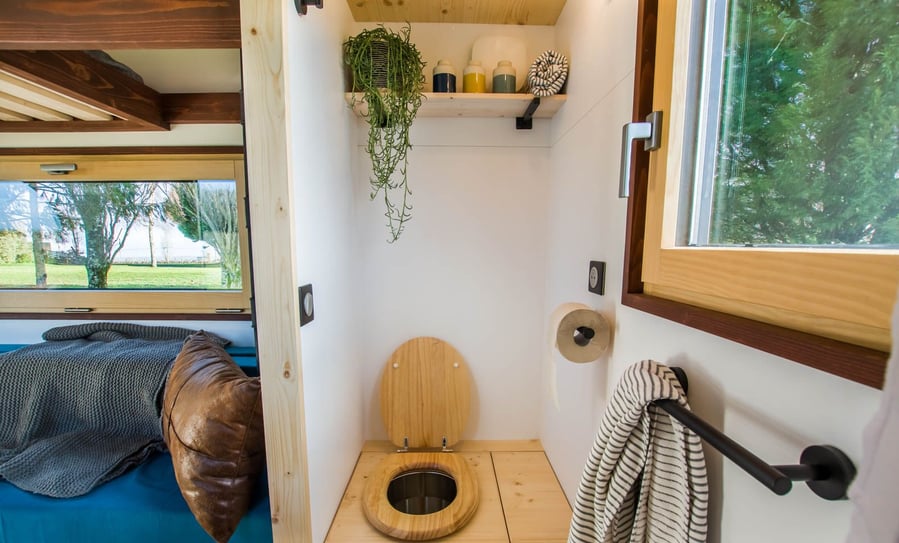
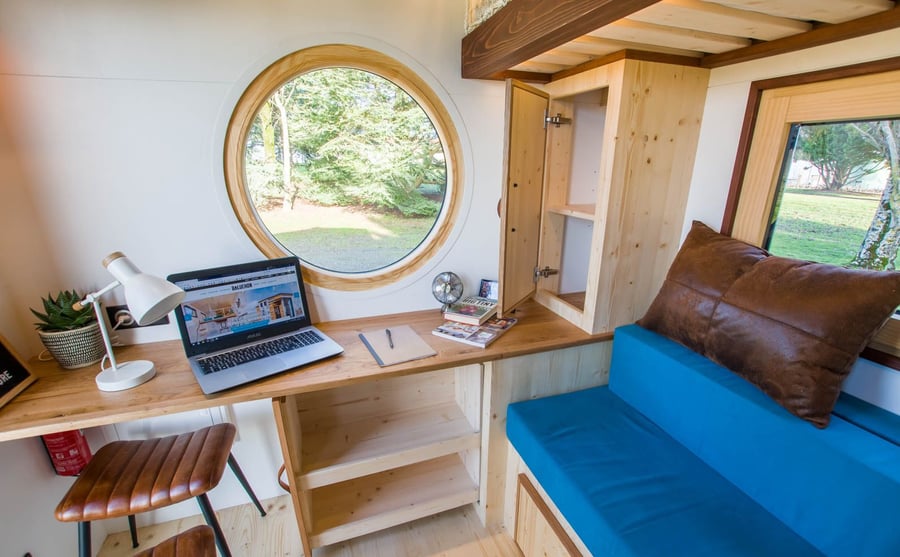
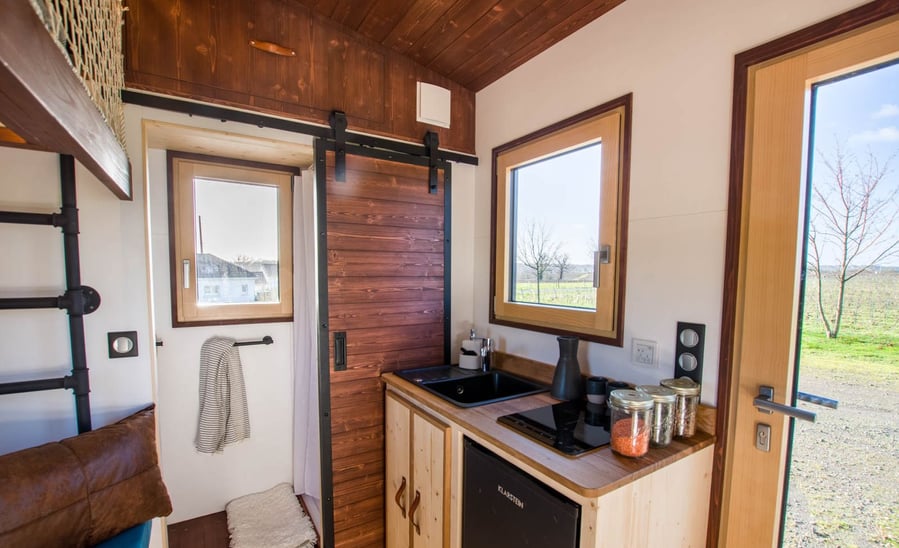
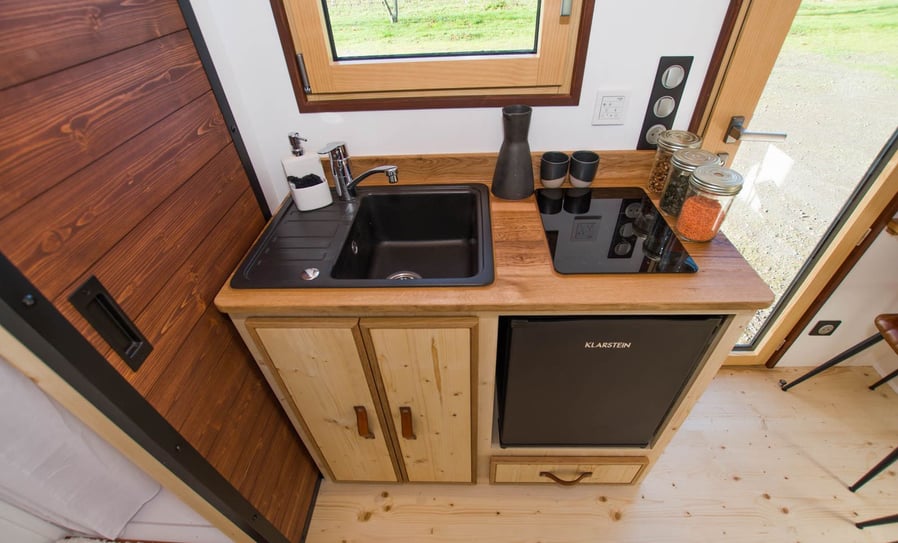
Of course, at this size, no one but the staunchest solo minimalist will be able to live in it full time. Baluchon created it for a client who wanted a portable home base for weekend fishing trips. But thanks to a clever layout and great choices in materials, the Nano feels a lot bigger than it is inside, offering just about all the comforts of home.
When you step through the door, the first thing you see is a built-in bench couch with storage underneath, upholstered in bright robin’s egg blue. On the left wall, below a circular window, is a long table that seats two people, which can be used both for working and dining. Two storage cabinets on this wall offer additional space to stow personal belongings.
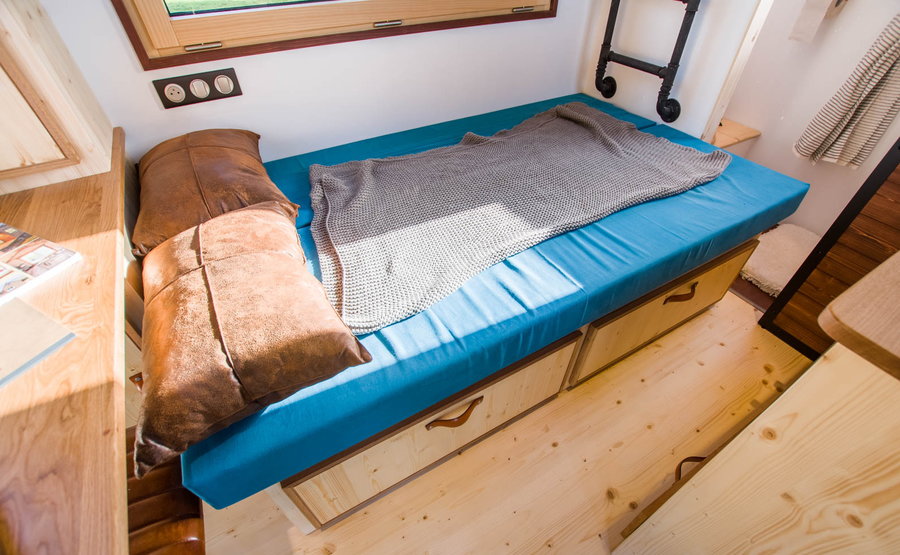

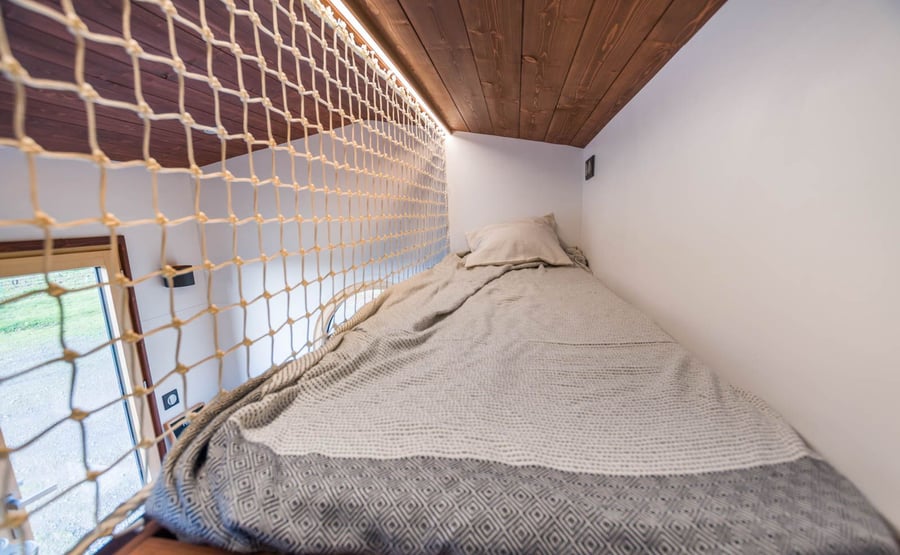
The bench couch is made with alternating slats that allow the storage space underneath to be pulled out into a full-size bed that sleeps two. Impressively, the designers have also managed to fit a sleeping loft for one into this tiny space, despite the fact that the ceilings aren’t particularly high. Accessed by a pipe ladder built into the wall, it’s secured by a net, and it’s the perfect size for a child.
Across from the couch is the compact kitchen, which features a mini fridge, induction cooktop, standard-size sink, and storage, with another operable window overhead. A sliding barn door in a darker contrasting wood stain offers access to the bathroom, which, believe it or not, contains a shower. There’s also a composting toilet, shelves, and another operable window for air flow.



Little details like the leather drawer pulls, modern exterior lights, and black metal roofing give this tiny home a higher-end feel, while the glass door and plentiful windows let in plenty of daylight. At such a small size, the Nano is a breeze to tow around, and a reminder that bigger isn’t necessarily better.




